Kakapo
- December 17, 2023
- 0 comment
The kakapo(Strigops habroptilus), also known as the night parrot or owl parrot, is a critically endangered species of parrot native to New Zealand. The combination of the genus “Strigops” and species “habroptilus” forms the scientific binomial name for the Kakapo, which is used by scientists to classify and identify this unique parrot species in the Linnaean system of taxonomy.
Physical Appearance

Kakapo
- Lifespan: 90 years
- Habitat: Native Forests, Especially in Hilly and Rugged Terrains.
- Diet: Fruits, Seeds, Leaves, Bark, and Wood.
- Size: 58 to 64 cm
- Weight: 2 to 4 kilograms
- Wingspan: 3 feet
- Conservation Status: Critically Endangered
- Population Trend: Carefully monitored
Kakapos are large, nocturnal, flightless parrots endemic to New Zealand. They are the only surviving members of the superfamily Strigopoidea, which also included the extinct moa-nalos and the kakapo’s closest relative, the recently extinct owl parrot.
Species Type of Kakapo
The Kakapo (Strigops habroptilus) is a species of parrot. It belongs to the family Strigopidae, which is a family of parrots endemic to New Zealand. The Kakapo is also commonly referred to as the night parrot or owl parrot due to its nocturnal habits and owl-like appearance. This species is unique in several ways, including its flightlessness and critically endangered status, making it one of the most iconic and rare parrot species in the world.

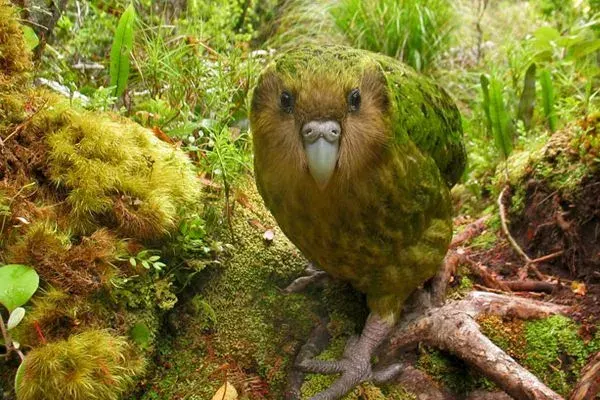
The kakapo is a true evolutionary marvel, with its unique species type and fascinating adaptations. It serves as a reminder of the importance of conservation efforts for endangered species like this one.
Feather Coloration of Kakapo
These differences in feathering and physical characteristics can vary among individual Kakapos, and they may not always be reliable for sex determination. To accurately determine the sex of a Kakapo, genetic testing or other specialized techniques may be required, especially for individuals with less pronounced physical differences between the sexes.
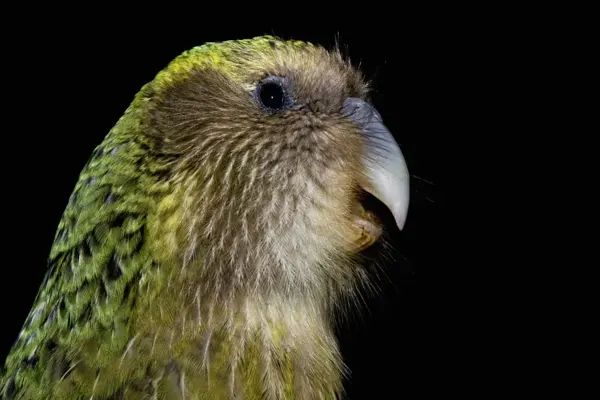
Male
- Generally brighter and more vibrant, with olive-green, yellow, and brown tones.
- Face is a bright yellow with a prominent black mask extending from the beak to the ear. Crest is also black.
- Have more pronounced green and brown markings on their wings and back compared to females.
Female
- Face is a darker olive-green with a less distinct black mask. Crest is brownish-grey.
- Have more subtle markings with a greater presence of grey and black.
- Underparts are a more greyish-white with more prominent brown streaks.
- Tail feathers lack the black tips seen in males.
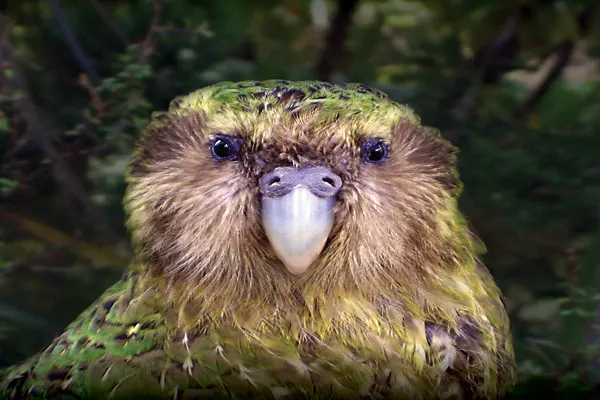
The differences in plumage are most noticeable during breeding season, when males become more brightly colored to attract mates. Juvenile kakapo, regardless of sex, have a more greyish and mottled appearance compared to adults.
Flight Characteristics of Kakapo
Despite their inability to fly, the kakapo has survived for millions of years by evolving alternative strategies for movement and survival. They represent a unique adaptation within the parrot family and offer a fascinating glimpse into the diverse evolutionary pathways that birds can take.
- Strong Legs: The kakapo has strong legs that allow it to walk, hop, and climb trees with surprising agility.
- Excellent Climbers: They are able to climb tall trees using their powerful claws and strong legs.
- Good Walkers: Kakapos can walk long distances at a steady pace, often covering several kilometers in a night.

- Short Wings: Compared to other parrots, the kakapo has relatively short wings that lack the necessary length and proportion for sustained flight.
- Lack of Keel: The kakapo’s sternum (breastbone) lacks a keel, which is a prominent bony structure where the powerful flight muscles of flying birds attach.
- Reduced Muscle Mass: Due to their flightlessness, kakapos have weaker flight muscles than their flying relatives.
- Soft Feathers: The kakapo’s feathers are much softer and fluffier than those of flying birds, lacking the strength and rigidity needed for efficient flight.
The inability to fly has made Kakapos particularly vulnerable to introduced predators in New Zealand, such as rats, stoats, and cats. Flightlessness reduces their ability to escape from these ground-dwelling predators, contributing to their critically endangered status.
Migration Patterns of Kakapo
The Kakapo (Strigops habroptilus) is not known for long-distance migrations like some bird species. Instead, Kakapos are native to New Zealand and have a sedentary or non-migratory lifestyle. They are typically found in specific regions within New Zealand, particularly on forested islands and in protected reserves.
Historically
- Kakapo were known to move between different forest types and altitudes depending on the changing seasons and food availability.
- They may have also made occasional long-distance movements across open ground, although the extent of this is not fully understood.
- Their movements were likely influenced by a combination of factors, including food resources, weather conditions, and social interactions.



Present
- Due to their flightlessness and the threats posed by predators, kakapo populations are now confined to predator-free islands.
- This limits their ability to move freely and search for food, requiring them to be supplemented with food by conservationists.
- Some limited movement still occurs within these islands, as individuals explore their territories and seek out mates.
- However, long-distance movements are no longer possible, and the nomadic lifestyle of the past is largely lost.
Historically, kakapo were nomadic, meaning they didn’t have a fixed migratory pattern. Their movements were largely dictated by food availability and breeding opportunities. However, due to their flightlessness and the changing landscape of New Zealand, their ability to move freely has been significantly restricted.
Habitat & Distribution of Kakapo
The Kakapo (Strigops habroptilus) is a unique and critically endangered parrot species native to New Zealand. Historically, Kakapos were more widely distributed across New Zealand’s North and South Islands, but due to habitat destruction, predation by introduced species, and other factors, their range has significantly contracted.
- Forests: Both dense and open forests with a rich diversity of plants for food and shelter.
- Tussocklands: Areas dominated by tussock grasses, providing nesting sites and feeding grounds.
- Scrublands: Dense areas of shrubs and small trees, offering cover and food sources.
- Coastal areas: Dunes and coastal forests with access to palatable vegetation.

- Predator control: Maintaining strict biosecurity measures and eliminating introduced predators on kakapo islands.
- Habitat management: Enhancing the quality of existing habitat and restoring degraded areas.
- Translocation: Establishing new populations on additional predator-free islands to increase overall population size and distribution.
- Captive breeding: Utilizing specialized breeding facilities to supplement the wild population and manage genetic diversity.
Conservation efforts for the Kakapo focus on protecting and restoring their habitat, controlling invasive predators, and closely monitoring their populations. The goal is to increase the Kakapo population and eventually reintroduce them to parts of their historical range on the New Zealand mainland, where they can live and breed without the constant threat of introduced predators.
Behavioral Traits of Kakapo
The kakapo’s behavioral traits are a testament to their remarkable ability to adapt and survive in their challenging environment. By understanding these behaviors, we can better appreciate these unique birds and contribute to their continued existence for generations to come.
- Kakapos are primarily active at night, using the darkness to forage for food and avoid predators.
- They are generally solitary creatures, only coming together to mate during breeding season.
- This nocturnal and solitary nature makes them difficult to study and observe in the wild.
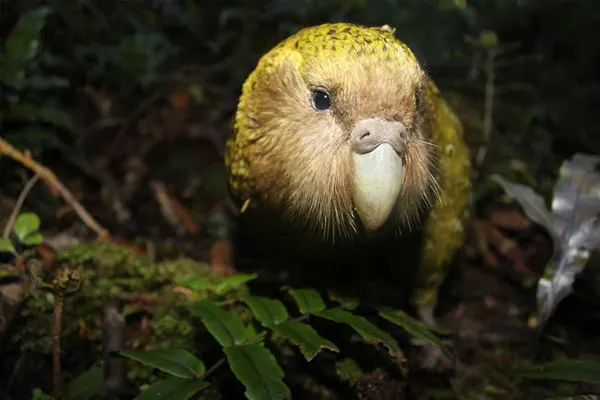
- Kakapos have a lek breeding system, where males gather at specific locations to display for females.
- Males compete for mates by displaying their plumage and engaging in vocalizations and scent marking.
- Females choose the most dominant and attractive males to mate with.
- Kakapo females are dedicated mothers, incubating their eggs and raising their chicks alone.
Due to the historical introduction of mammalian predators and habitat loss, the kakapo population has declined dramatically, making it one of the rarest and most endangered parrot species in the world. Conservation efforts are ongoing to protect and preserve the remaining individuals, with dedicated programs focused on habitat restoration, predator control, and managed breeding to ensure the survival of this unique species.
Role in Ecosystem of Kakapo
Their population may be small, the kakapo’s role in the New Zealand ecosystem is far from insignificant. Their unique behaviors and interactions with other species make them a vital part of the natural balance. Understanding and protecting these fascinating birds is essential for ensuring the health and diversity of the New Zealand environment for generations to come.
- Seed Dispersal: Kakapos contribute to seed dispersal by consuming a variety of plant matter, including fruits, seeds, leaves, and bark. As they move through the forest, undigested seeds from the kakapo’s diet are excreted, helping to disperse seeds to different locations. This process is crucial for the regeneration and diversity of plant species in their habitat.
- Herbivory: As herbivores, kakapos help control the growth of plants by feeding on vegetation. Their browsing behavior can influence the composition and structure of plant communities in the ecosystems they inhabit.
- Pollination: While not the primary pollinators, kakapos may inadvertently contribute to pollination as they feed on nectar-producing plants. Pollen can stick to their feathers, transferring from one flower to another.

- Forest Floor Disturbance: Kakapos are ground-dwelling birds that forage and nest on the forest floor. Their activities, such as digging for food or creating nest sites, can influence the structure and composition of the forest floor, potentially creating microhabitats for other species.
- Role in Pre-European Ecosystem: Before the introduction of mammalian predators by humans, including rats and stoats, the kakapo had a more prominent role in the ecosystem. It likely played a role in shaping plant communities and may have had interactions with other native fauna.
The kakapo focus not only on the survival of the species but also on restoring its ecological role. This involves managing and mitigating threats from introduced predators, habitat restoration, and ensuring conditions that support the natural behaviors of the kakapo in its native environment.
Dietary Habits of Kakapo
The kakapo’s dietary habits are closely linked to the availability of food resources in its native New Zealand habitat. The species has evolved to be a specialized herbivore, utilizing a range of native plant species for sustenance. The importance of the kakapo’s diet extends beyond its individual health to its role in seed dispersal and influencing the composition of plant communities in the ecosystem.
- Fruits and Seeds: Kakapos are known to be fruit and seed eaters. They consume a variety of native New Zealand fruits, including those from trees such as rimu, totara, and kahikatea. During mast years when certain trees produce an abundance of fruit, kakapos take advantage of the rich food resources.
- Leaves and Bark: In addition to fruits and seeds, kakapos feed on leaves and bark. They are known to browse on a variety of native plant species, contributing to their herbivorous diet.
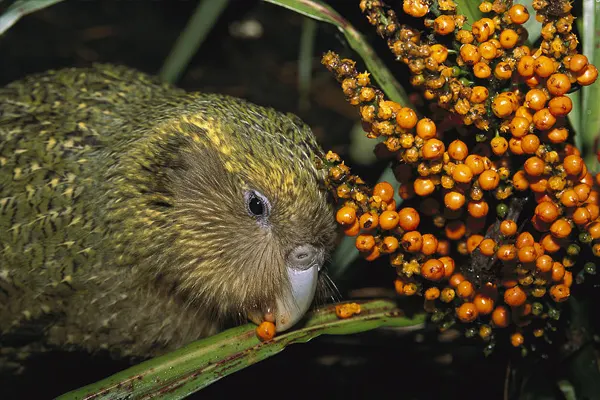
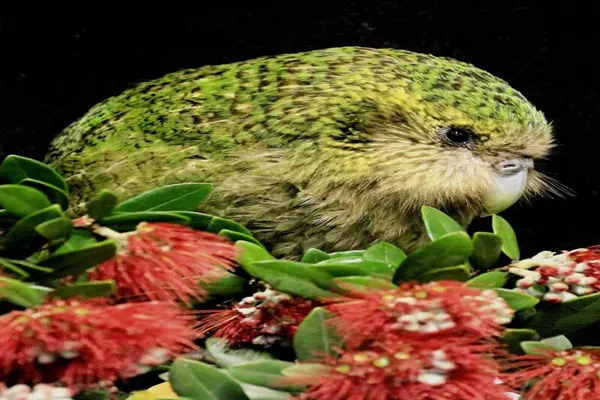
- Wood: Kakapos have been observed gnawing on wood, particularly the wood of totara trees. This behavior is believed to provide additional nutrients or minerals, and it may also help in keeping their beaks in good condition.
- Herbaceous Plants: Kakapos may consume herbaceous plants, adding diversity to their diet. Their feeding habits can vary based on the availability of different plant species in their habitat.
The kakapo’s unique dietary habits, characterized by their herbivorous nature, windfall feeding strategy, and seasonal adaptations, are a testament to their remarkable ability to survive and thrive in their challenging island environment.
Interesting Facts of Kakapo
The kakapo is a unique and remarkable bird with fascinating adaptations and a vital role in the New Zealand ecosystem. By understanding their biology, behavior, and the threats they face, we can contribute to their conservation and ensure their continued survival for future generations to appreciate.
- Flightless parrot: The kakapo is the only flightless parrot in the world. Their wings have become vestigial, unable to support flight.
- Largest living parrot: Reaching up to 64 cm long and weighing 4 kg, the kakapo holds the title of the largest living parrot species.
- Nocturnal and solitary: They primarily active at night and prefer solitary lives, only coming together for breeding.
- Unusual plumage: Unlike many brightly colored parrots, kakapos have a mottled green and brown plumage that camouflages them well in the forest undergrowth.
- Strong scent: Kakapos possess a distinctive musky scent, which can attract predators but also plays a role in communication and mate selection.
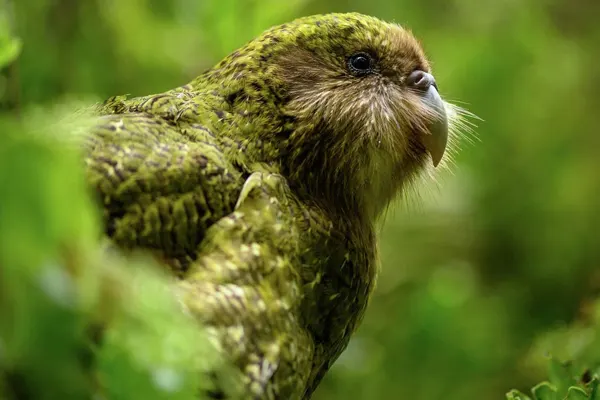
- Curious and playful: Despite their solitary nature, kakapos can be surprisingly curious and playful. They have been observed engaging in playful behaviors such as chasing each other and playing with objects.
- Windfall feeding: These birds employ a unique feeding strategy called windfall feeding, where they wait for fruits to fall from trees before consuming them.
- Excellent climbers: While they cannot fly, kakapos are excellent climbers. They use their strong legs and claws to navigate the forest canopy and access fruits located high in the trees.
- Lek breeding system: Males gather at specific locations called leks to display for females, using vocalizations and scent marking to attract mates.
- Dedicated mothers: Females incubate their eggs alone and raise their chicks for several months until they are independent.
The kakapo’s story is one of adaptation, unique behaviors, and the challenges faced by a species on the brink of extinction.
Nesting Habits of Kakapo
The kakapo faces challenges in reproduction due to factors such as predation by introduced mammals, habitat loss, and limited availability of suitable nesting sites. Conservation efforts include interventions to enhance breeding success, such as supplementary feeding during non-mast years.
- Nesting Sites: Kakapos choose nesting sites on the ground, often in sheltered locations among native vegetation. The choice of a well-concealed site is likely an adaptation to protect the nests from potential predators.
- Scraping Nests: Kakapos do not construct elaborate nests. Instead, females create simple nests by scraping a shallow depression in the ground. This minimizes the visual cues that might attract attention from predators.
- Breeding Behavior: Breeding in kakapos is closely tied to mast years, which are years when certain native trees produce an abundance of fruit. During mast years, females are more likely to breed due to the increased availability of food resources.
- Limited Reproductive Frequency: Kakapos have a low reproductive rate. Females do not breed every year, and the decision to breed is influenced by factors such as food availability. This infrequency is an adaptation to the unpredictable nature of New Zealand’s native flora.
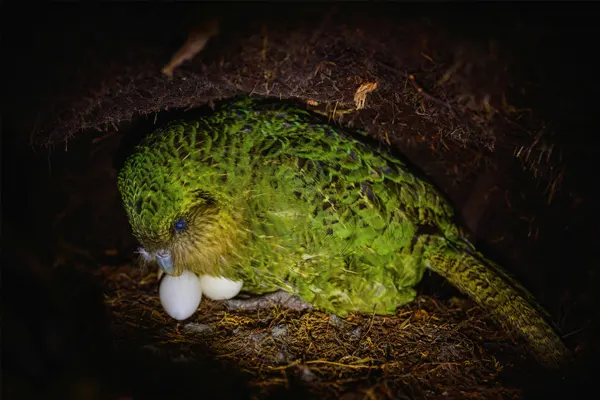

- Booming Displays: Males play a crucial role in attracting females for mating. During the breeding season, males gather in specific areas called leks, where they engage in competitive vocal displays. The distinctive booming calls, produced by inflating their thoracic air sacs, are part of the mating ritual.
- Egg-Laying: After successful mating, females lay a clutch of eggs in the scraped nest. The number of eggs laid can vary, but it is usually limited, contributing to the overall low reproductive output of the species.
- Incubation and Parental Care: The female is responsible for incubating the eggs and providing care for the chicks after hatching. The incubation period lasts several weeks. Once the chicks hatch, they are altricial, meaning they are born in a relatively undeveloped state and require parental care.
The nesting habits of the kakapo highlight their dedication to raising their young. By understanding these habits and the challenges they face, we can develop effective conservation strategies to ensure the survival and future success of this remarkable species.
Calls & Vocalizations of Kakapo
The kakapo, a flightless parrot endemic to New Zealand, boasts a surprisingly complex and diverse repertoire of calls and vocalizations. These sounds play a critical role in their communication, social interactions, and mating behavior.
- Booms: The most iconic kakapo vocalization is the loud, booming call produced by males. These booms can be heard from several kilometers away and serve to attract females and defend territories.
- Chings: Males also produce high-pitched, metallic chings that act as a “come-hither” call to females seeking mates.
- Skraaks: These harsh, rasping sounds are used by both sexes for various purposes, including alarm calls, contact calls, and expressions of aggression or annoyance.
- Chatters and clicks: Kakapos are also known for their softer chattering and clicking sounds, often used for communication between mates or parent and chick.

Call Functions
- Mating: Male kakapos use their repertoire of booms, chings, and other vocalizations to attract females and establish dominance over rivals during breeding season.
- Territorial defense: Booms are primarily used by males to defend their territories and deter other males from encroaching on their space.
- Social interactions: Chatters and clicks help kakapos maintain social contact with each other, especially within family groups.
- Communication with chicks: Females use specific sounds to communicate with their chicks, including soft calls and clicks to guide them and provide comfort.
- Alarm calls: Harsh skraaks and screeches are used to alert other kakapos to potential dangers, such as predators or disturbances.
The kakapo’s diverse calls and vocalizations are more than just sounds; they represent a complex language used for communication, social interaction, and survival. By appreciating and understanding this unique aspect of their behavior, we can contribute to the conservation of this fascinating bird and ensure its continued existence for generations to come.
Conservation Status of Kakapo
Conservation of the kakapo involves collaboration between government agencies, conservation organizations, researchers, and the local community. As the status of species can change, it is advisable to check for the most recent updates on the conservation status of the kakapo from reputable sources.
- Historical Population Decline: The kakapo has experienced a significant decline in population due to habitat loss, predation by introduced mammals (such as rats, cats, and stoats), and other human-related activities.
- Flightlessness and Ground-Dwelling Behavior: The kakapo’s flightlessness and ground-dwelling habits make it highly vulnerable to introduced predators. These traits evolved in the absence of mammalian predators in New Zealand, making the kakapo ill-equipped to deal with the threats posed by introduced species.
- Low Reproductive Rate: Kakapos have a low reproductive rate, and successful breeding is infrequent. Factors such as mast-dependent reproduction, where breeding is linked to the availability of certain fruits, further limit reproductive success.
- Genetic Diversity: The kakapo population has low genetic diversity, which can increase vulnerability to diseases and reduce the species’ ability to adapt to environmental changes.


- Predator Control: Intensive predator control programs aim to mitigate the impact of introduced mammals on kakapo populations. This includes trapping and poisoning to reduce predation pressure.
- Habitat Protection: Efforts are made to protect and restore the natural habitat of the kakapo. Habitat loss and degradation are significant threats, and conservation initiatives focus on preserving the ecosystems where the kakapo resides.
- Managed Breeding Program: A managed breeding program is in place to increase the reproductive success of the kakapo. This involves closely monitoring individuals, supplementary feeding during non-mast years, and providing veterinary care when necessary.
- Research and Monitoring: Ongoing research and monitoring efforts are crucial for understanding the behavior, health, and ecology of the kakapo. This information guides conservation strategies and helps address emerging challenges.
The kakapo’s critically endangered status highlights the need for continued and robust conservation efforts. By addressing the threats they face and supporting ongoing conservation initiatives, we can help ensure the survival of this remarkable bird and its unique place in the New Zealand ecosystem.
Research and Ongoing Studies of Kakapo
Despite the challenges they face, kakapos continue to be the subject of extensive research and ongoing studies aimed at understanding their ecology, behavior, and conservation needs.
- Habitat use and selection: Studying how kakapos use different types of habitat and what factors influence their habitat preferences is crucial for conservation planning.
- Diet and foraging behavior: Investigating their feeding habits, prey selection, and seasonal changes in their diet helps to understand their ecological role and potential impacts of habitat changes.
- Predator-prey interactions: Studying the interactions between kakapos and their predators can inform predator control strategies and improve protection of kakapo populations.
- Disease surveillance: Monitoring for diseases and studying how they affect kakapos is essential for developing effective disease management strategies.
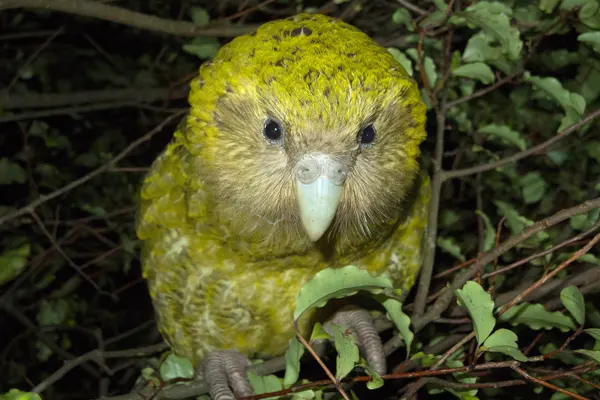
Breeding and Reproduction
- Reproductive success: Researchers study kakapo breeding behavior, including mate selection, nest site selection, egg laying, and chick rearing, to identify factors influencing their reproductive success and develop strategies to improve it.
- Captive breeding: Captive breeding programs play a vital role in supplementing the wild population and are a valuable tool for studying their reproductive biology and addressing breeding challenges.
- Assisted reproductive technologies: Researchers are exploring the use of assisted reproductive technologies, such as sperm cryopreservation and artificial insemination, to further increase the breeding success of kakapos.
Research is vital for informing conservation strategies and ensuring the future of the kakapo. By continuing to study their ecology, behavior, and genetic diversity, we can develop effective conservation interventions and safeguard this remarkable species for generations to come.
Educational and Ecotourism of Kakapo
Educational and ecotourism initiatives related to the kakapo play a significant role in raising awareness, garnering support, and contributing to the conservation of this critically endangered parrot species.
Educational Potential
- Captivating classroom resource: The kakapo’s unique appearance, nocturnal behavior, and ecological importance make it an engaging subject for students of all ages.
- Interdisciplinary learning: Studying the kakapo can incorporate various subjects, such as biology, ecology, geography, and conservation, promoting holistic learning.
- Raising awareness: Educational programs can raise awareness about the kakapo’s conservation status and the threats it faces, encouraging students to take action.
- Developing critical thinking: Analyzing the kakapo’s adaptations and ecological interactions can encourage students to think critically and solve problems.
- Inspiring future conservationists: Learning about the kakapo can ignite a passion for conservation and inspire future generations to protect this remarkable creature.

The kakapo presents a valuable opportunity for education and ecotourism. By leveraging its captivating presence and ecological significance, we can raise awareness, inspire action, and generate resources for its conservation. By implementing responsible practices and engaging local communities, ecotourism can be a powerful tool for ensuring the future of the kakapo and its critical role in the New Zealand ecosystem.
Conclusion
The kakapo, a unique and critically endangered parrot species native to New Zealand, stands at the forefront of conservation efforts and educational initiatives. Its distinctive characteristics, including flightlessness, ground-dwelling behavior, and fascinating vocalizations, make it a symbol of the challenges faced by wildlife in a changing environment. The critically endangered status of the kakapo underscores the urgency of conservation actions to ensure the survival of this remarkable species.
Ongoing research plays a pivotal role in unraveling the mysteries of kakapo biology, behavior, and ecology. Studies encompass various aspects, from population monitoring to genetic diversity assessments, providing valuable insights that guide conservation strategies. The collaborative efforts of researchers, conservation organizations, and local communities contribute to a holistic approach to kakapo conservation.
Educational and ecotourism initiatives emerge as powerful tools in the conservation toolbox. By fostering awareness and understanding of the kakapo’s significance, these initiatives create a bridge between the public and the conservation efforts underway. Visitor centers, guided tours, and citizen science programs not only offer unique experiences for enthusiasts but also channel resources towards the preservation of kakapo habitats.
The kakapo’s journey toward recovery is intertwined with the engagement of communities, both local and global. Educational programs, workshops, and awareness events empower individuals to become stewards of biodiversity, understanding the interconnectedness of ecosystems and the role each person plays in conservation.
As the kakapo continues to capture hearts worldwide, the challenges it faces underscore broader issues of habitat loss, introduced predators, and the fragility of unique ecosystems. The story of the kakapo is a call to action—a reminder that conservation is a shared responsibility, requiring sustained efforts, innovation, and a commitment to preserving the rich tapestry of life on our planet. Through continued research, education, and collaborative conservation, there is hope that the kakapo’s future can be secured, inspiring a legacy of resilience and coexistence for generations to come.




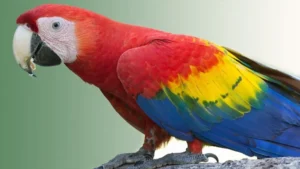
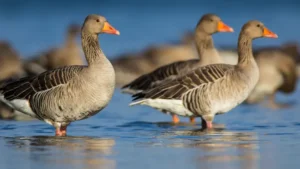
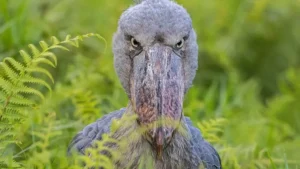

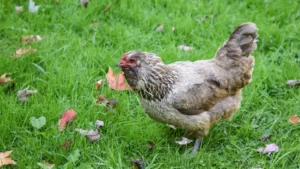
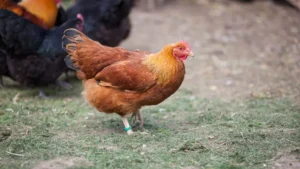

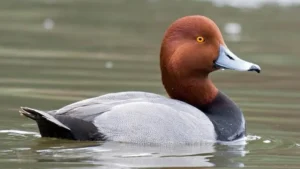
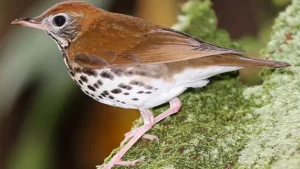
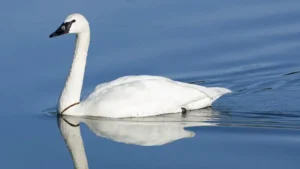
Leave your comment